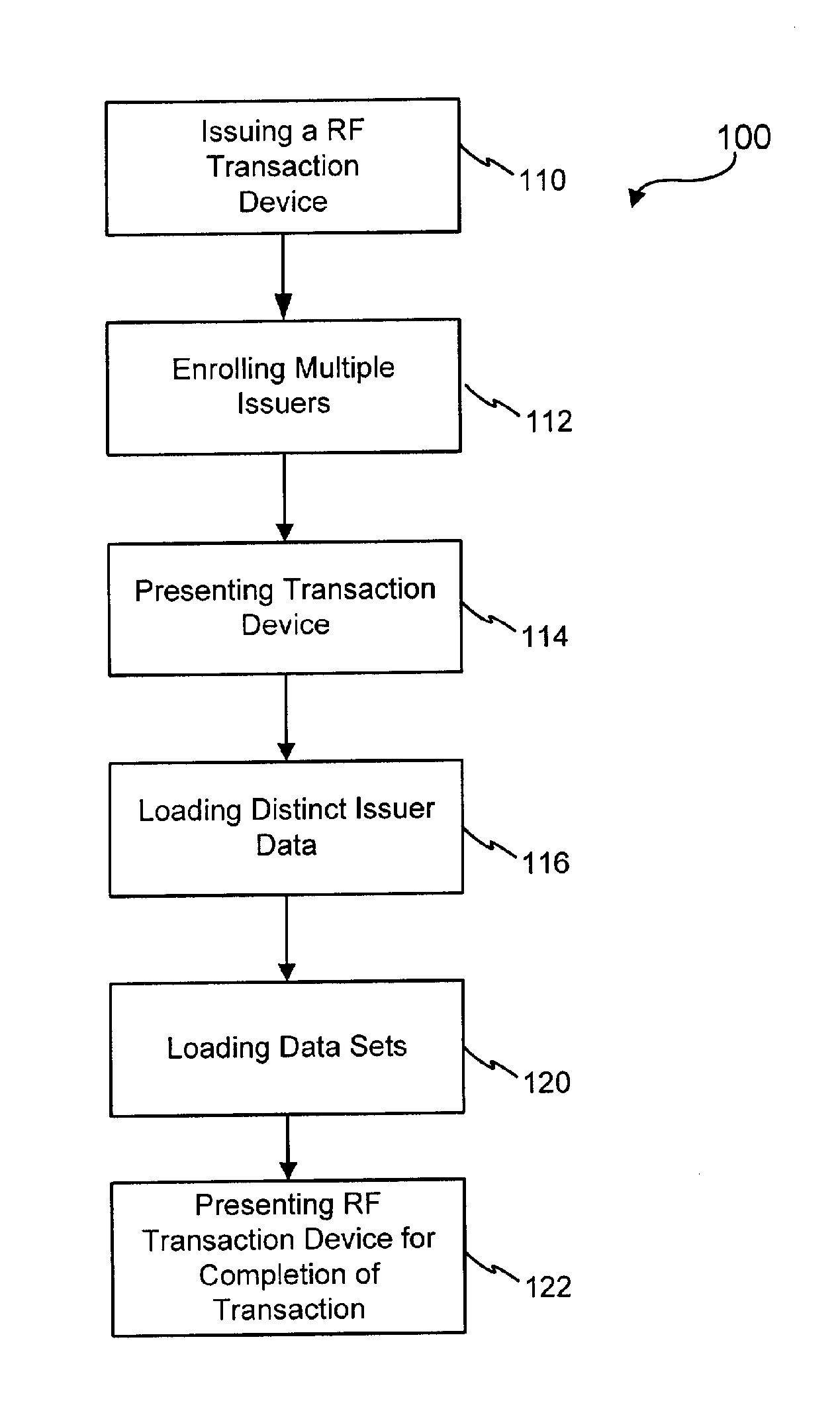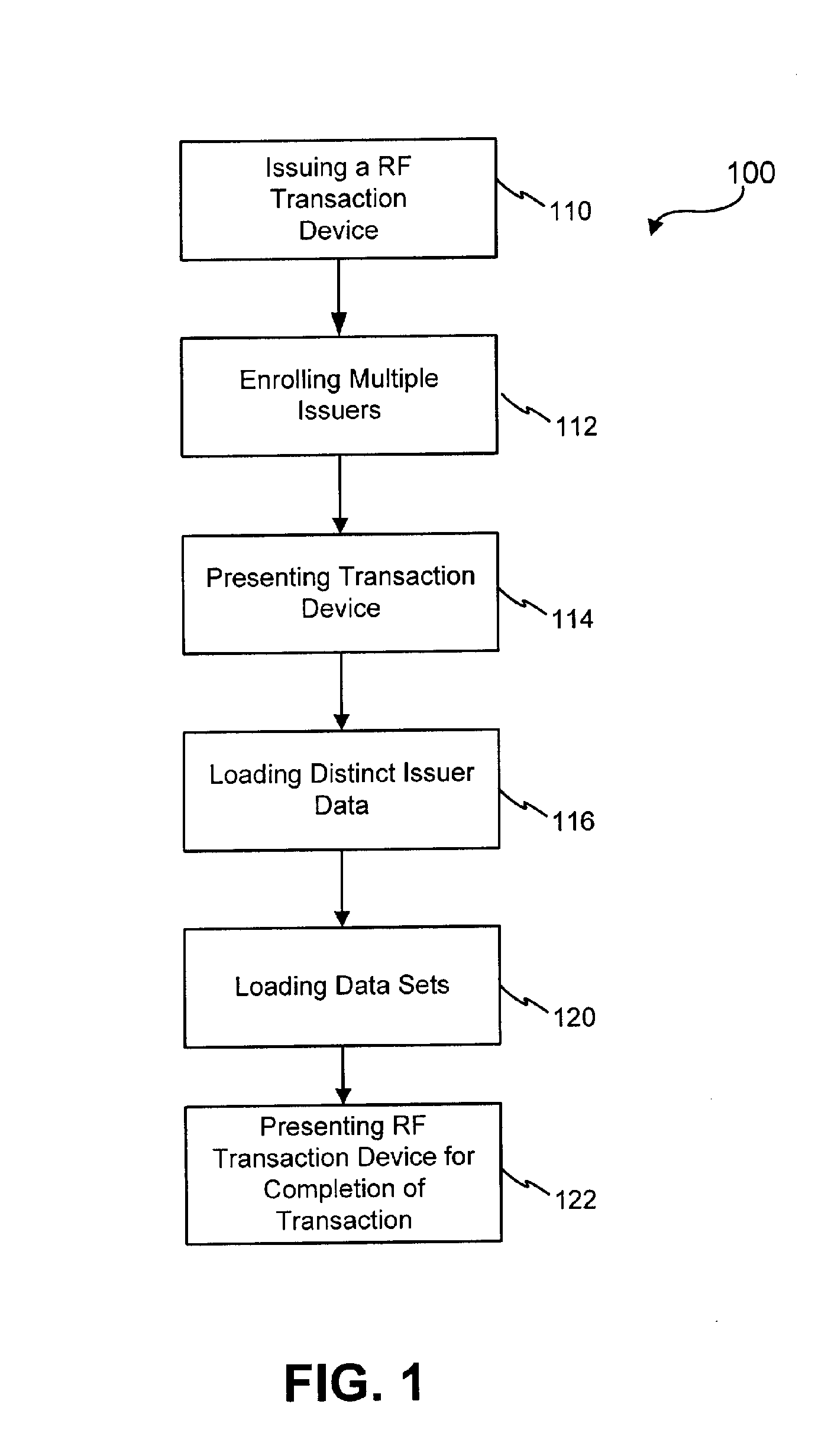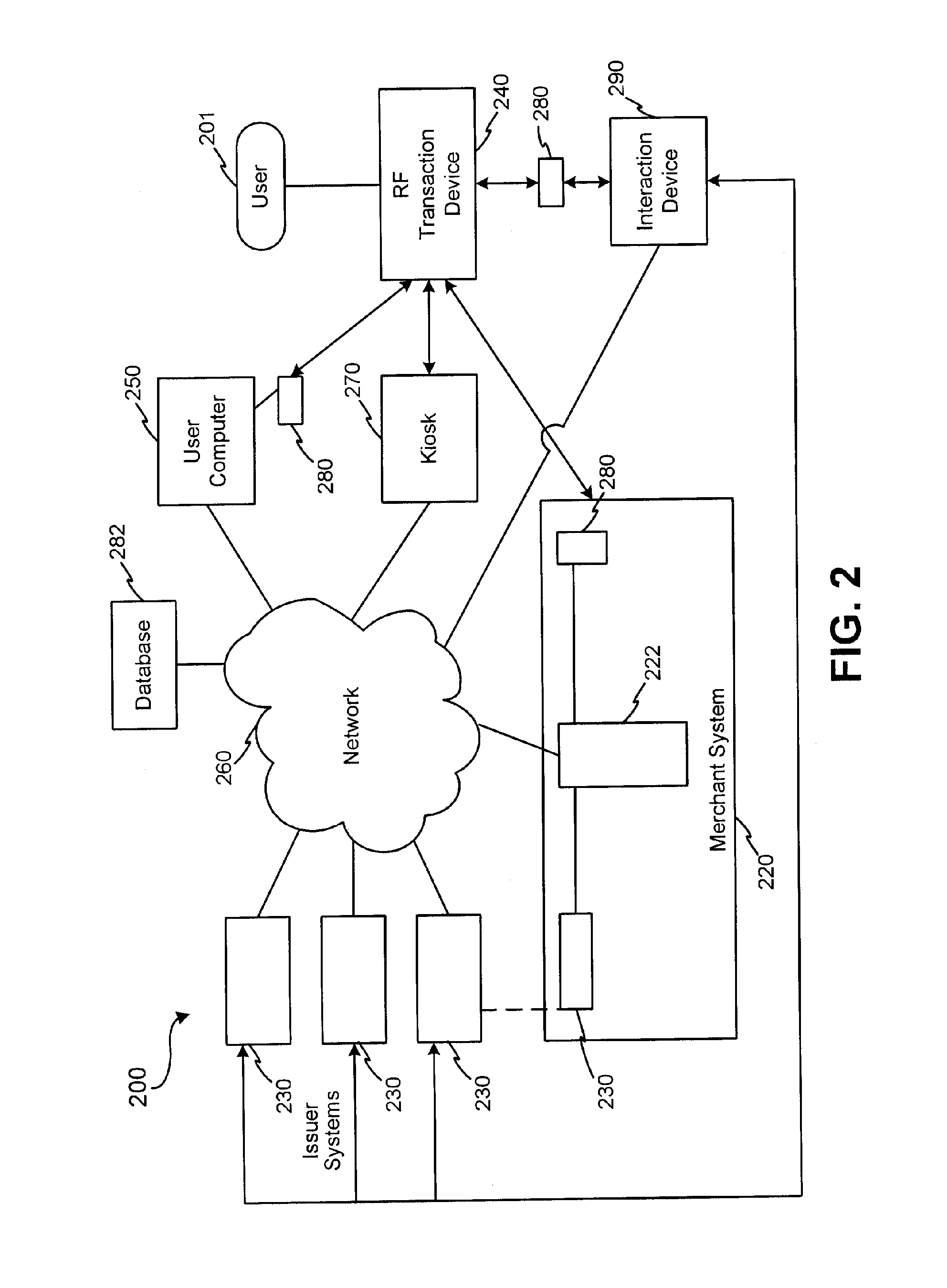Systems and methods for providing a RF transaction device for use in a private label transaction
a technology of private label and transaction device, applied in the field of payment system, can solve the problems of affecting the performance of the transaction device, affecting the performance of the transaction,
- Summary
- Abstract
- Description
- Claims
- Application Information
AI Technical Summary
Benefits of technology
Problems solved by technology
Method used
Image
Examples
Embodiment Construction
[0028] While the exemplary embodiments herein are described in sufficient detail to enable those skilled in the art to practice the invention, it should be understood that other embodiments may be realized and that logical and mechanical changes may be made without departing from the spirit and scope of the invention. Thus, the following detailed description is presented for purposes of illustration only and not of limitation.
[0029] The present invention provides a system and method for a RF transaction device configured to receive multiple data sets (e.g., “application tenants”) of differing formats, wherein the data sets are associated with a plurality of distinct transaction account issuers. In this context, an “application tenant” may include all or any portion of any data sets, which are substantially correlated to an account issuer, which the issuer may additionally use to substantially identify an instrument user or related account. For example, where the account issuer prov...
PUM
 Login to View More
Login to View More Abstract
Description
Claims
Application Information
 Login to View More
Login to View More - R&D
- Intellectual Property
- Life Sciences
- Materials
- Tech Scout
- Unparalleled Data Quality
- Higher Quality Content
- 60% Fewer Hallucinations
Browse by: Latest US Patents, China's latest patents, Technical Efficacy Thesaurus, Application Domain, Technology Topic, Popular Technical Reports.
© 2025 PatSnap. All rights reserved.Legal|Privacy policy|Modern Slavery Act Transparency Statement|Sitemap|About US| Contact US: help@patsnap.com



